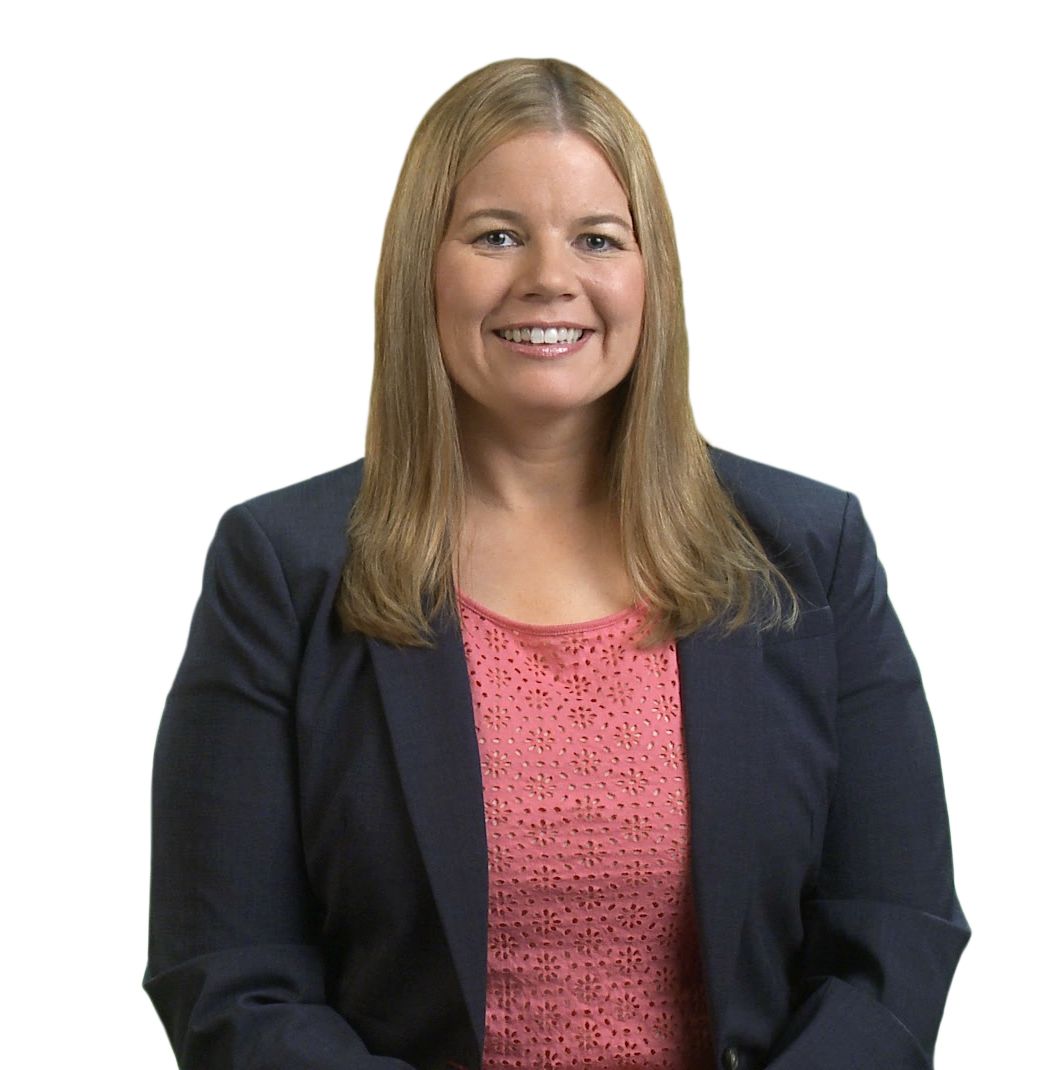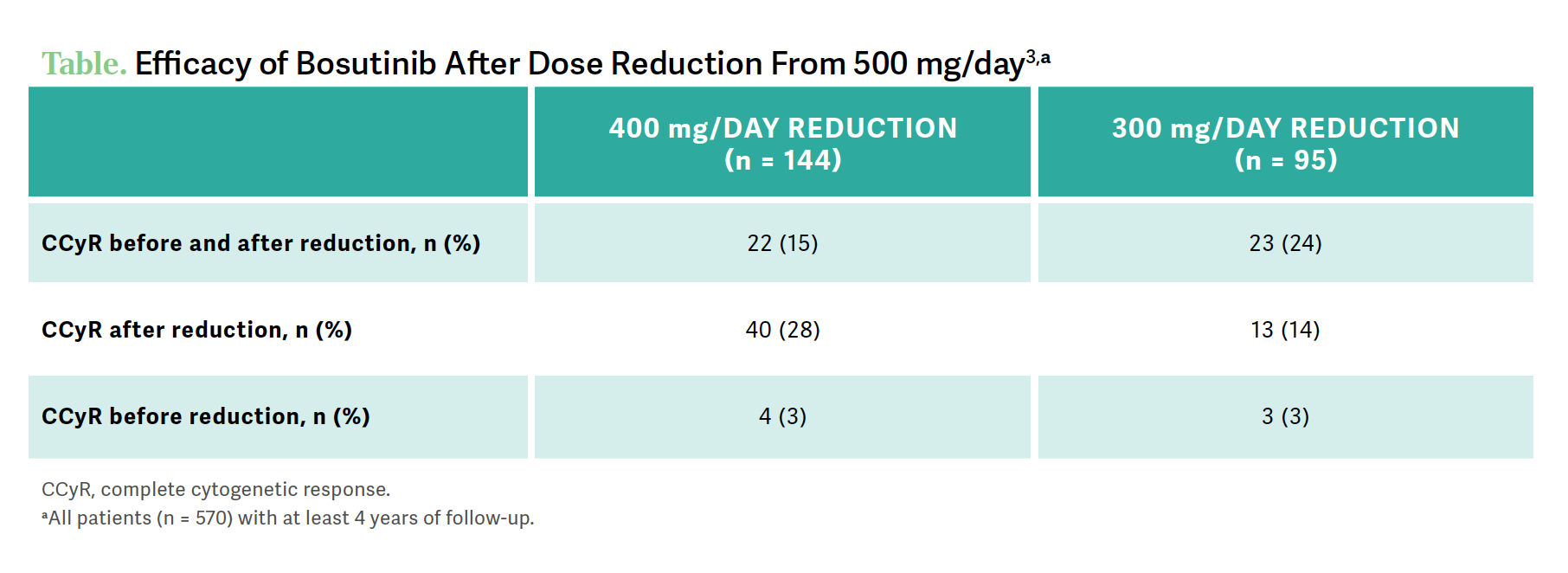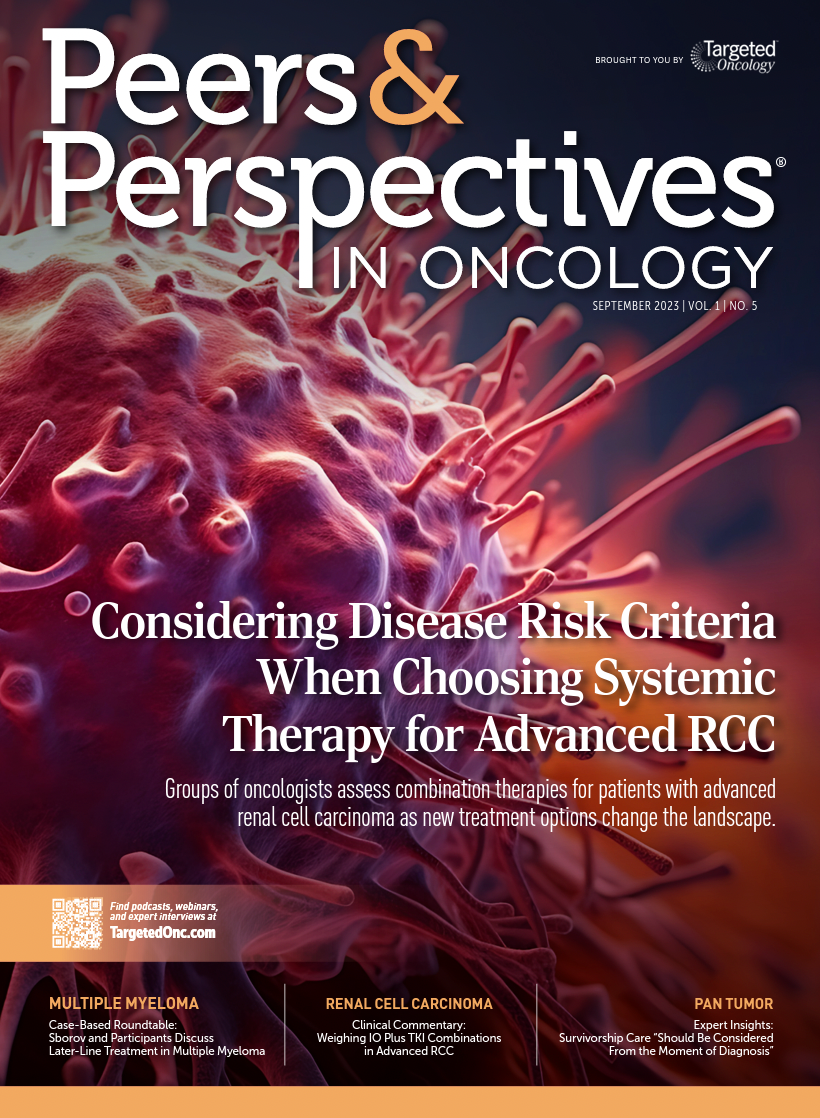EVENT REGION Texas
PARTICIPANT LIST Greg Guzley, MD | Mary Ann Skiba, DO | Andrew Kovoor, MD | Katherine Wang, MD | Dai Chu Luu, MD | Camille Johnson, MD| Bramham Reddy, MD | Maria Chona Aloba, MD
CASE SUMMARY
A 58-year-old man presented with anemia and fatigue. His ECOG performance status was 0. On physical examination, his spleen size was normal and not palpable. Laboratory results included 6% myeloblasts, a white blood cell count of 55 × 109/L, platelet count of 300 × 109/L, and BCR::ABL1 transcript level of 30%. His Sokal index score was 1.2 points (intermediate risk). He has a medical history of diabetes and controlled hypertension, and his brother and father had a history of cardiac events.
He received a diagnosis of chronic-phase Philadelphia chromosome–positive chronic myelogenous leukemia (CML). Considering his intermediate Sokal risk, diabetes, and family history, he is at risk for cardiac events. Four days after starting bosutinib (Bosulif), he reported grade 2 diarrhea (5 stools/day).
DISCUSSION QUESTIONS
- When adverse events (AEs) develop, how do you consider whether they are class-effect AEs or drug-specific AEs?
- What factors affect dose hold/dose reduction vs changing TKI (tyrosine kinase inhibitor)?
GUZLEY: The cytopenias are class effects. All other toxicities can be seen with each of the agents, but the numbers are different. [There was] a 70% incidence of diarrhea in the bosutinib arm [of the BFORE trial; NCT02130557]… but there can be some cases of diarrhea with any of the agents.1 Dasatinib [Sprycel] is the one most associated with pleural effusions, but…other agents can still have a small incidence of developing that.2 That’s where you play the odds. If the patient is at risk for cardiovascular disease, [you may avoid] giving them a drug that has a high incidence of causing cardiovascular complications vs one with a lower risk of complications. From a nonclinical standpoint, I have patients coming from 100 miles away. Giving them a drug that causes [significant diarrhea] when they’re driving 100 miles is not a pleasant drive.
SKIBA: When you switch a drug [because of] the AEs, you’re switching one AE for another. I’ve had a couple [of] patients with horrendous rashes [from] all these drugs, so much so that they’d end up in the hospital with desquamating rashes. It didn’t matter what I put them on. I try to manage the AEs with the drug I’ve chosen [first].
SWEET: What factors make you decide to hold a dose and then rechallenge with the same dose vs dose reduce vs change the TKI altogether? Are you quick to change the drug, or do you typically try to dose reduce first?
SKIBA: When I first start a patient on a medication and they’re having symptoms [such as] stomach pain and nausea, I’ll hold the drug and then restart it, depending on their age. If they’re in their 70s or 80s, I’ll do it gingerly, [giving it on] Monday, Wednesday, Friday. Then I’ll go to every other day and then put them back to daily therapy. I try different maneuvers before I switch medications.
GUZLEY: I choose [therapy based on] the best balance of efficacy and safety. If I’m switching, [that means] I’m switching to a drug that I thought was not the best choice. We are changing toxicities, so we’re picking one toxicity over another, but I’ve got to have a good reason to go to a drug that I think is the second-best option for that patient.
SWEET: [Are you] more likely to pull the dose or dose reduce than to switch the drug in the beginning?
GUZLEY: It’s going to depend on the severity. Someone on dasatinib who [requires] a pericardial window for tamponade is not going back on dasatinib. Someone who has a little cough that I can take care of with a dose reduction [would continue treatment]. If someone on nilotinib [Tasigna] gets themselves an admission for diabetic ketoacidosis, they’re not going back on nilotinib. You have to look at not only the toxicity but the severity of the toxicity. Grade 2 diarrhea is unpleasant, and that’s going to [affect] the quality of life for a lot of patients. Grade 1, maybe not so much, but…if I’m making a choice between sticking with a drug that I think is the best option for a given patient and going to what I think is second best, I’d better have a good reason for doing that.
KOVOOR: I haven’t had many issues with significant AEs, but for me, it would depend on the severity of it and what it is. If it’s someone who’s getting pleural effusions where they’re having bad dyspnea or they can’t move, I may decide to change it. If it’s someone who is getting periodic thoracentesis, I might consider a dose reduction. [I look] at the AE, the severity of it, and how it’s affecting the patient’s quality of life and the family members who are aiding and giving care as well.
MODERATOR SIDEBAR
Targeted Oncology: How does the patient’s BCR::ABL1 level influence whether to dose reduce tyrosine kinase inhibitors?
SWEET: A study looked at the kinetics of BCR::ABL1 [level] decline... and the excessive deaths that were related to dose reductions and dose interruptions [due to] treatment-related toxicities or financial burdens [due to] treatment.4 Patients [may have] financial toxicity or treatment-related toxicity and have to hold their dose or lower the dose too low and ultimately [experience disease progression], then die because of the missed doses. [The study] looked at the level of response that correlated to the probability of death from CML.
As long as [someone’s response] is less than 1% on the international scale for BCR::ABL1, their overall survival is excellent, and 1% is approximately equivalent to a complete cytogenetic response.4 Once a patient gets to a value of 1% or less, perhaps that is a point where we want to consider dose reduction as long as they can maintain their response less than 1% on the international scale, because that level of BCR::ABL1 control correlates well with excellent disease control and prolonged survival. But the lower doses will also cause [fewer] treatment-related toxicities and less financial toxicity, which ultimately benefits the patient.
DISCUSSION QUESTION
- How would you manage this patient with grade 2 diarrhea?
WANG: For this patient, I would probably dose reduce first… [or] hold for a period until the diarrhea resolved and then dose reduce. Oftentimes, people will tolerate [treatment] better with a slightly reduced [dose of] bosutinib. I had patients like that doing just fine several years later, so I’d do dose reduction first.
SKIBA: I’d try loperamide [Imodium] or diphenoxylate/atropine [Lomotil] first and see whether that controls the diarrhea, and if that didn’t do it, then I’d hold it until the diarrhea subsided, and then I’d try to restart it again.
LUU: I’d hold it, rule out infection, and then go down 1 dose reduction and go from there. If they were very sick with the diarrhea and continued to have it despite the dose reduction and wanted to switch, I’d switch, but I’d try to maximize the bosutinib.
SWEET: When you have patients who have toxicities from their TKIs, how do you manage that? Do you usually bring them in more frequently? Do you try to manage them over the phone? Do you have your advanced practice providers seeing these patients regularly?
JOHNSON: It depends on what the toxicity is. If there’s any concern over the phone or [from] any messaging, I have a low threshold to bring them in, especially when they’re first starting.
REDDY: I see most patients with CML. I don’t have nurses or nurse practitioners to see them. With bosutinib, is the lowest dose [300 mg a day], or is there any lower dose that patients can use and maintain?
My feeling is dasatinib has a lot of room to use. I’ve seen patients given [doses] as low as 20 mg [starting from] 100 mg…. It looks like we have more room to adjust on dasatinib. I’m trying to get a feel [for] whether bosutinib also has the same. I have a patient on a 100-mg [dose], and he’s [older], not able to maintain molecular remission, but for him that [dose is working]. He already [did not complete treatment] on dasatinib.
SWEET: There are some data on efficacy of 300 mg a day that have been published [Table3]. In a setting of kidney dysfunction or liver dysfunction, there are recommendations to go lower than that.4 I have patients who are on 100 mg a day or 200 mg a day for a variety of different reasons, but I don’t typically recommend that because I think the concern would be long-term efficacy in that setting [because of ] potentially breeding resistance over time. We don’t have the data in that setting, but there are data to support 300 mg a day. I have patients on 200 mg a day who have undetectable BCR::ABL1 [Sidebar].
DISCUSSION QUESTION
- How do you ensure continued adherence to TKI therapy by your patients?
SWEET: It’s a challenge for everybody. I [manage] CML for a living. It’s [a disease in approximately] 60% of my patient population, and I still haven’t found the right answer to get patients to adhere.
GUZLEY: What I tell patients when I first meet them is that we have a disease now that I can [manage] the same way I would…keep high blood pressure under control, but before those drugs were available, this was a 2-year [time to] death, and there was not a thing I could do about it. I make the point clearly that the No. 1 reason individuals lose their responses is not taking the medicine, and I make it clear that without control of the disease, you’re going to die. I don’t use the word cure, but I can control it for the rest of their life.
SKIBA: I have the same approach, especially for [younger] people. I tell them that if they take their drug, they can most likely have the same lifespan as somebody else their age. If they lie to me or choose not to take their medication, I say up front that I’m going to let them go from the practice because I can’t watch somebody who has a [manageable] disease not help themselves.
SWEET: What do they say to that?
SKIBA: They get startled. We’ve had a handful of younger people die from this over the years, and that’s heartbreaking to watch.
SWEET: I’m…making a generalization, but it’s typically the younger ones, at least in my experience. Of all the patients with blast-phase CML I have treated, they’re almost all in their 20s and 30s…. I’ve seen it in all [age groups], but it’s…a hard age group to convince that they need to stay on a drug every day.
GUZLEY: That is applicable to most metastatic solid tumors and a number of the liquid tumors. I [tell my younger] patients with testicular cancer…“I need to see you at least once a year,” but most of them never show back up.
ALOBA: Patients are usually worried about the diagnosis, so most of the patient population I treat are adherent to their medication.
SWEET: I try to normalize missing doses…as if I have expected that they did miss a dose. Rather than asking, “Have you missed any doses in the past month or in the past 3 months?” I’ll ask the question, “How many doses have you missed?” Because we’re all human, so I am getting an idea of how many that may be so I’ll know how to interpret PCR [polymerase chain reaction] results when I get them. For some patients, that works.
It makes them feel a little more comfortable telling me, “I missed 1 [dose] this month” or “I miss 1 [dose] a week.” For other patients, it probably doesn’t do anything. I have found that in some cases, normalizing that expectation, even though it’s not what I would like to hear, does allow them to be a little more forthcoming.
JOHNSON: I always bring up the possibility of a break…if we get a good remission. Not at the beginning, but I incorporate it at some point.
SWEET: This is a proactive patient population for the most part, and a lot them know that’s an option close to the time that they [receive a] diagnosis. I’ve found that’s a question they ask on the first visit. It is a bit of a carrot that you can dangle, which works for some patients.
REFERENCES
1. Cortes JE, Gambacorti-Passerini C, Deininger MW, et al. Bosutinib versus imatinib for newly diagnosed chronic myeloid leukemia: results from the randomized BFORE trial. J Clin Oncol. 2018;36(3):231-237. doi:10.1200/ JCO.2017.74.7162
2. Sprycel. Prescribing information. Bristol Myers Squibb; 2021. Accessed August 4, 2023. https://tinyurl.com/4za4s27e
3. Kota V, Brümmendorf TH, Gambacorti-Passerini C, et al. Efficacy and safety following bosutinib dose reduction in patients with Philadelphia chromosome-positive leukemias. Leuk Res. 2021;111:106690. doi:10.1016/j.leukres.2021.106690
4. Radivoyevitch T, Druker BJ, Radich J, et al. Chronic-phase chronic myeloid leukemia times to death by disease support tyrosine kinase inhibitor dose reductions when BCR::ABL1 level is <1% and decreasing. Blood. 2022;140(suppl 1):6793-6795. doi:10.1182/blood-2022-159194



